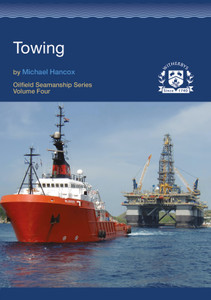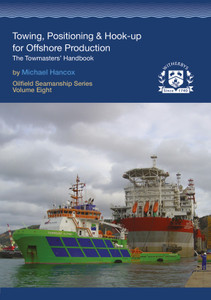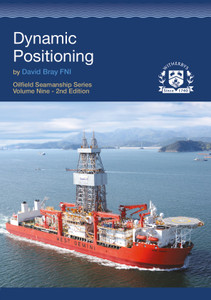
This publication is guide to both the principles of stability management and the operational daily management of afloat stability on board semi-submersibles and jack-up units. Previously published by Clarkson Research Services Ltd.
This publication is a guide to stability and ballast control on board semi-submersibles and jack-up type craft. It begins with an overview of stability theory and principles, before going on to look at:
- Transit theory
- trim list and associated problems
- daily stability calculations
- ballast control equipment and associated systems
- ballast and deballasting operations
- training of personnel
Volume 7 of the series is aimed at those personnel on semi-submersible vessels and jack-up type craft responsible for the control and maintenance of that most fundamental parameter required of the majority of craft, namely to stay afloat and upright.
This is not a detailed study of ship stability, those readers interested in the subject may wish to consult the books noted in the Bibliography. Only sufficient theory and principles are given to enable personnel to understand the basis on which daily calculations are made and how to apply theory in particular situations.
The specialised craft under consideration are commercial vessels operating in an often extremely harsh environment. In order to earn their keep they are expected to perform to their design specification in terms of carrying capacity and working limits. Optimum conditions can only be reached if the practice of Stability Control is understood and applied. Neglect of Stability Limitations and failure to understand the implications of overloading, loss of stability margins due to damage and attempting to make vessels operate out their design envelopes (in stability terms) has led to losses of both men and vessels or to serious damage. In commercial terms mistakes and neglect of weight control have led to the cancellation of charters.
Ballast Control Practice as applied specifically to semi-submersibles, has in the last few years been given the importance which it deserves, in terms of the amount of training those doing the work need and the design characteristics of ballast control systems. Ballast Control Operators are usually the same personnel that carry out stability calculations and weight control. It is no accident that these functions are combined and in fact it is better that they are, provided the data on current and projected stability conditions which they supply is understood by those in charge of the vessel. Sadly, this has not always (and is still not) been the case, with tragic results. Some Port States have introduced specific legislation in terms of qualifications and knowledge required by those in charge of these specialist craft and the training requirements for Ballast Control Room operators, Barge Engineers etc., but such legislation is not always rigorously policed. The offshore oilfield is particularly prone to the habit of attempting to abide by instructions issued by senior, often shore based managers, which in terms of operational safety and good practice are impossible to carry out. Some of these senior staff may benefit from a study of this volume.
The book is aimed primarily at Barge Masters, Barge Engineers and Control Room Staff. It is hoped that it can be used as a training and reference book for personnel new to the peculiarities of oilfield specialist vessels.
Author’s Note
Introduction
Section 1: Stability Theory
Note on Stability Theory
Part 1: Basic Stability Theory
Part 2: Stability Theory as Applied to Semi-Submersibles
Part 3: Transit Stability r
Part 4: Trim List and Associated Problems
Part 5: Weight Control and Determination of Stability – Semi-Submersibles
Part 6: Daily Stability Calculations
Part 7: Damage Stability
Part 8: Lightweight Checks and Problems
Part 9: The Inclining Experiment
Part 10: Training Personnel
Appendix
UK Department of Energy training guidance Note No. 4
Selected further reading
Section 2: Ballast Control
Introduction
Part 1: The Purpose of Ballast Control Systems
Part 2: Ballast Control Equipment
Part 3: Ballast Control Associated Systems
Part 4: Emergency Ballast Control Equipment
Part 5: Pumps and Pumping Operations
Part 6: Ballast and Deballasting Operations
Part 7: Control Room Watch Keeping
Part 8: Inspection and Maintenance of Ballast Control Equipment
Part 9: Fault Finding, Recognition and Diagnosis
Part 10: Non-Standard Operating Procedures and System Appraisal
Part 11: Damage Control Procedures
Part 12: Barge Masters Notebook
Witherbys Titles
Witherbys titles are developed using scripts developed by technical experts that are peer reviewed within work groups. Typically, they seek to improve understanding of the regulations, recommendations and guidelines issued by Industry.
Witherbys staff have significant expertise in the fields of navigation and hazardous cargoes as well as in the presentation of complex subjects in a graphic and easy to understand manner.
- Number of Pages:
- 656
- ISBN:
- 9781870945769
- Published Date:
- October 1996
- Binding Format:
- Paperback
- Book Height:
- 295 mm
- Book Width:
- 0 mm
- Weight:
- 1.9 kg
- Author:
Michael Hancox
- Preview:
- Yes






